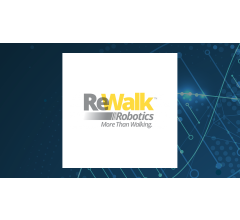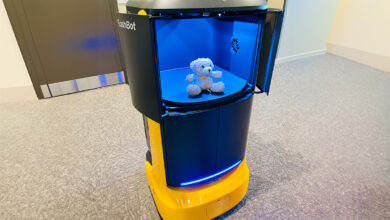Comau changes with robotics market, adds focus on software and new applications
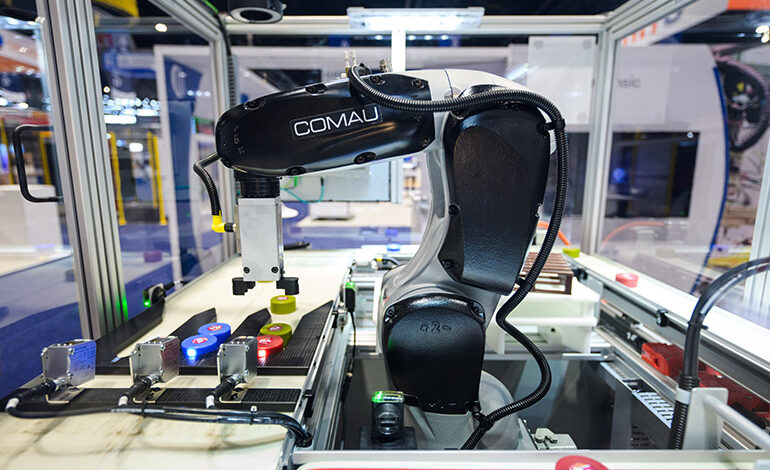
|
Listen to this article |

Comau is expanding from automotive manufacturing to logistics applications such as pick and place. Source: Comau
If change is constant in technology, even established industrial automation providers must adapt to keep up. Comau SpA recently said it is shifting from traditional robotics to software-driven systems and industry-agnostic technologies.
The company has been expanding from the automotive industry and systems integration to new markets including logistics and energy, noted Allesandro Piscioneri, global head of strategic marketing, advanced robotics, and digital segments at Comau.
“The transition has been happening from our traditional business of body in white to new batteries for mobility, including hydrogen cells and power for robots,” he told The Robot Report. “Our business is evenly divided between North America, Europe, and Asia.”
The Turin, Italy-based unit of Stellantis said it expects the market for automation to experience a 10% compound annual growth rate (CAGR) between 2022 and 2030, with an increase from 1.2 million industrial robots today to 2.6 million by 2029. Comau has 50 years of experience with manufacturers and employs more than 3,700 people in 13 countries.
The company also supplies collaborative robots, wearables, vision-based systems, and software. At Automate this month, Comau announced new products, including its S-Family welding and materials handling systems, the MI.RA/OnePicker system, and the MATE-XB and MATE-XT exoskeletons.
 Submit your presentation idea now.
Submit your presentation idea now.
Comau debuts S-Family robot arms
The new S-Family of small, six-axis robot arms can handle payloads up to 13 and 18 kg (28.6 and 39.6 lb.). They are designed with hollow wrists and protected cabling to avoid damage and the risk of contamination in sensitive environments such as in food and beverage, battery manufacturing, or electronics.
“We squeezed knowledge from internal and external customers to focus on high-performance, precise production,” said Piscioneri. “It’s also rated IP68 for water and dust resistance and can be mounted on the floor, wall, or ceiling.”
The S-Family is designed to be compact for tight spaces and includes integrated arc and gigabit dressings, according to Comau. The S-13 can reach up to 1,960 mm (77.1 in.), and the S-18 can reach up to 1,730 mm (68.1 in.).
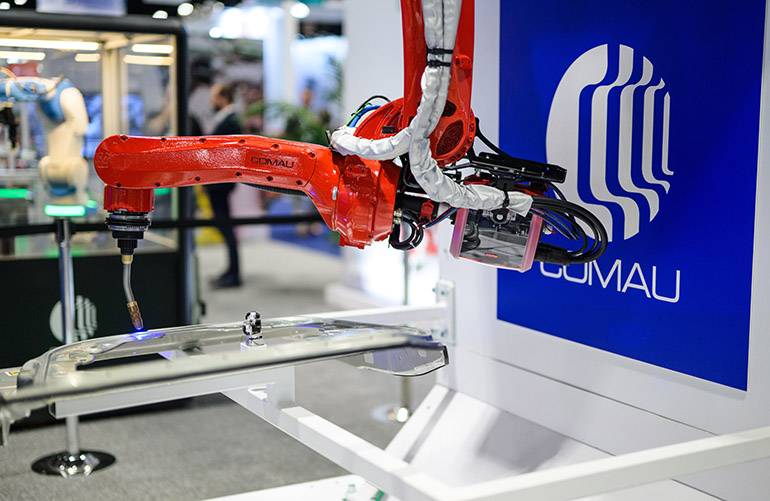
Comau demonstrated welding with its S-Family robot at Automate. Source: Comau
Comau also shows picking, identification systems
Comau’s Machine Inspection Recognition Archetypes, or MI.RA/OnePicker line, is a hardware-agnostic machine vision product intended to ease robotic piece picking. It uses sensors and artificial intelligence to identify and pick random objects from bins without relying on CAD data or prior information about the items’ size, shape, color, or other characteristics.
MI.RA/OnePicker is “adaptable to any brand of commercial robot, customized bin, or customized gripper,” said Comau. This makes it suitable for pick-and-place, kitting, sorting, e-commerce, and other warehouse applications, it said.
Customers can use virtual simulation tools and predictive algorithms for optimal path management and collision-free trajectories, Comau said. The software comes with Comau’s Racer5 five-axis cobot, which can switch from collaborative mode to industrial mode to work at full speed without the need for safety cages, explained Piscioneri. A safety assessment is still necessary for the payload and application.
Exoskeletons and collaboration to improve accessibility
Comau displayed non-powered exoskeletons intended to help workers with repetitive lifting and overhead tasks, addressing widespread labor shortages. The MATE-XB is designed to support the lower back, and the MATE-XT is designed for the upper back and shoulders.
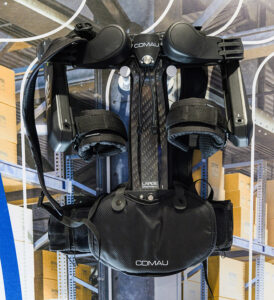
MATE-XT upper-body exoskeleton. Source: Comau
In addition, Comau showcased in Chicago its partnership with Rockwell Automation in a demonstration cell using its Racer-3 robot and Rockwell’s Unified Robot Control (URC) library and Emulate3D for palletizing, color sorting, and depalletizing. All of Comau’s robots can be controlled via PCs with its Open Controller software.
Another collaboration is with Intrinsic, whose Flowstate development platform can “make the next generation of robotics more accessible to all,” Comau said. In March, Intrinsic co-founded the Open Source Robotics Alliance (OSRA). It had acquired Robot Operating System maker Open Source Robotics Corp. in 2022.
Speaking of accessibility, Comau’s e.DO robot was originally intended to help STEM (science, technology, engineering, and mathematics) students, but industrial customers have found it useful for training and building complete systems, Piscioneri said.
 Submit your presentation idea now.
Submit your presentation idea now.
